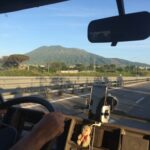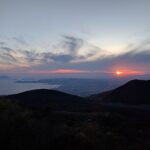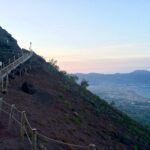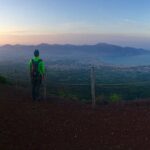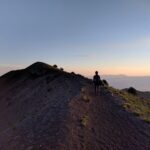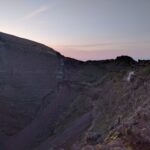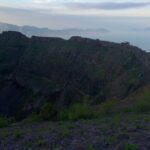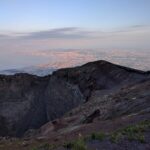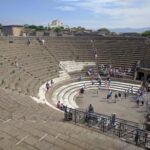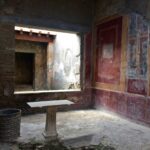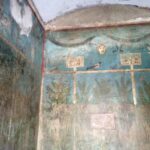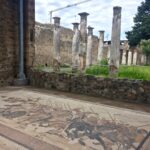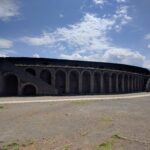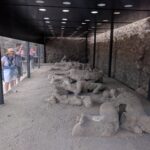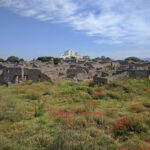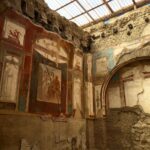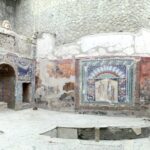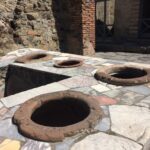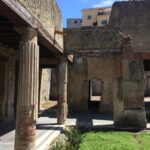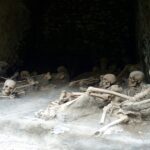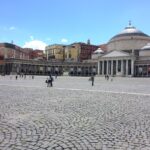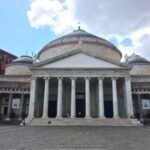I’m not going to blab too much history here. I’m going to keep it plain and simple: In 79 A.D. Mount Vesuvius erupted, burying and destroying the Roman city of Pompeii. And now everyone wants to see it.
Thanks to the preservative qualities of volcanic ash, soot, and mud, and the excavations from the 18th century until now, the ancient ruins of Pompeii are known and public to the world. Even with the overwhelming number of tour groups, the massive span of ruins are fascinating and humbling enough to mesmerize any new visitor. Additional attractive sites near the Pompeii ruins include the smaller ruins of Herculaneum, a hike along the rim of the still-active Mount Vesuvius, and the city of Naples. Ancient history, an epic hike, and the birthplace of pizza? Anyone visiting Italy for the first time (like me) must make this part of Italy a destination!
And now I share with you all my research for motorhoming in the area. Naples and Pompeii are notorious for horrendous traffic. Incredibly narrow streets, traffic jams at all hours of the day, and aggressive Italian drivers means you should drive in, park your vehicle, and only move your vehicle when you’re leaving the region. We ended up basing from one of the many campsites in Pompeii and traveled by train to Herculaneum and Naples. I highly recommend this.
What about Mount Vesuvius? Well, that was interesting. As experienced hikers, we were immediately turned off by all the information we read about hiking Mount Vesuvius. Basically tourists come in by the hoards from Naples via train, hop on a bus that ranges from €14-€20, ride the bus up the mountain, pay an entry fee of €6.50 to enter the park and hike the rim, and only spend 1-1.5 hours on the mountain before hopping back on the bus to return to Pompeii. In order to avoid the masses, I had the idea of parking our motorhome at the top of Mount Vesuvius at sunset in order to hike the rim at sunrise. It worked out and we had an incredible sunrise hike, but we had to get a little creative. 😉
We began our adventure in the Pompeii area by arriving to the top of Mount Vesuvius just in time for the final minutes of sunset. Because the park closes at 5pm daily, I had the feeling we’d be the only people there. There were only 2 other cars, but all the tour buses and vendors had gone for the day.
As soon as we got out of the motorhome, we quickly discovered that the trail was gated! Posted hours were 9am-5pm. We were only worried for a few seconds, because we quickly saw how easy it was to climb the fence. Less than 10 hours later, when the sky was barely bright, we began our trek to the summit.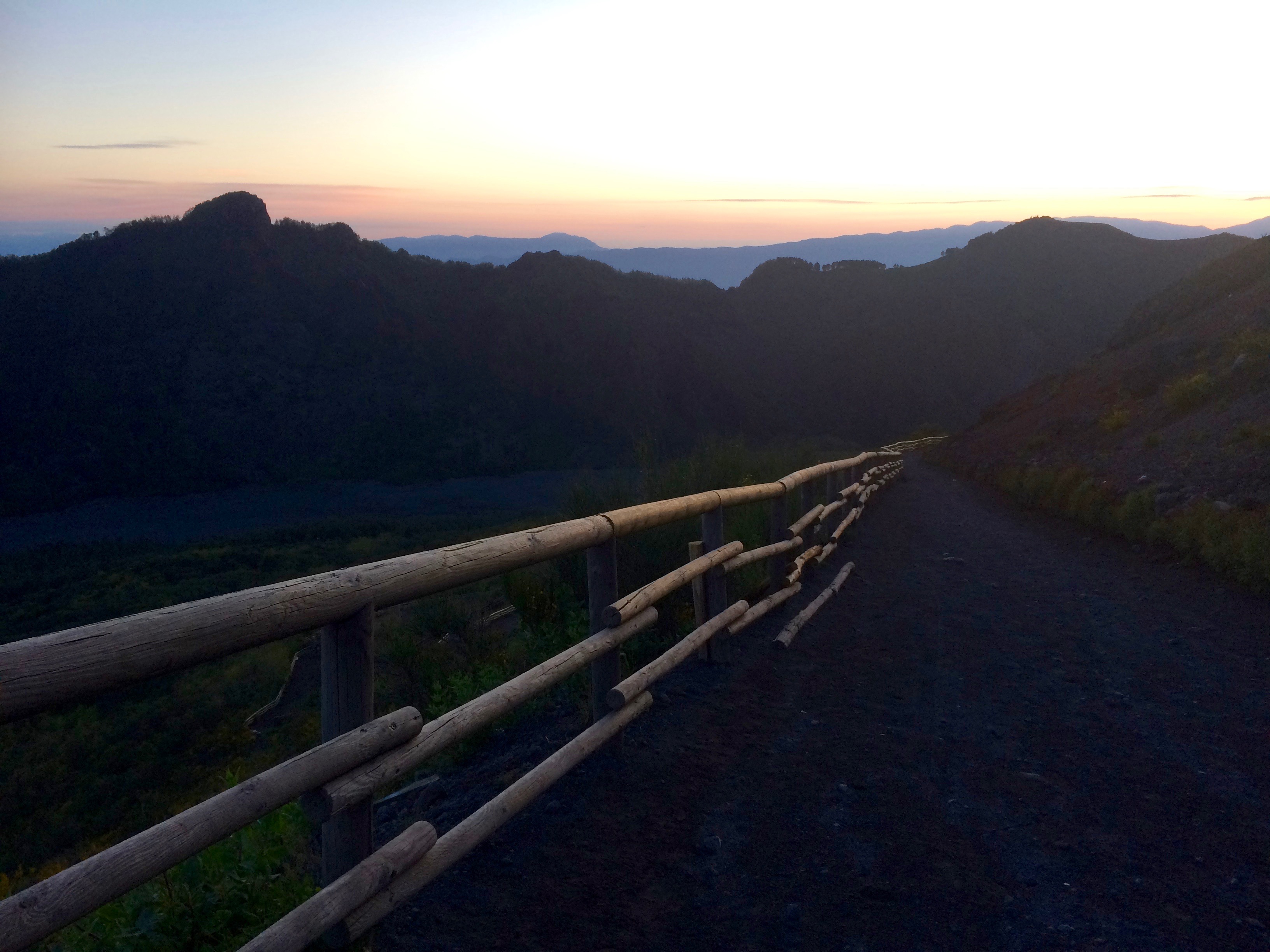
The air was cold and everything was still. Early morning meant clear skies. Naples and Pompeii below were still asleep in darkness, and the typically vibrant Mediterranean spread flat like a blanket. There was not another soul in sight. It was beautiful.
Shots of looking into the crater, with active fumaroles!
Almost to the summit, looking down at Pompeii: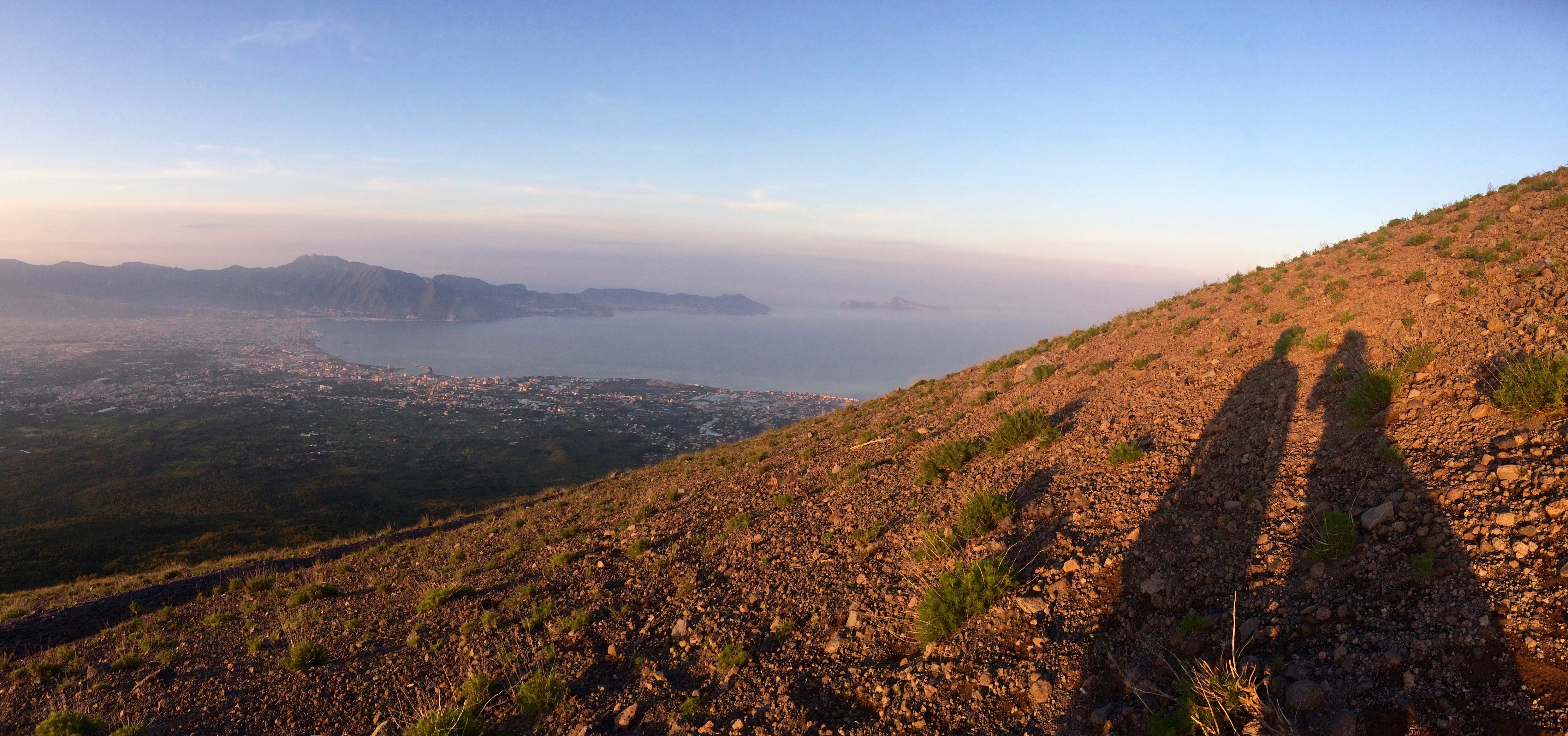
Pompeii to the left, the shadow of Mount Vesuvius on the Mediterranean, and Naples to the right: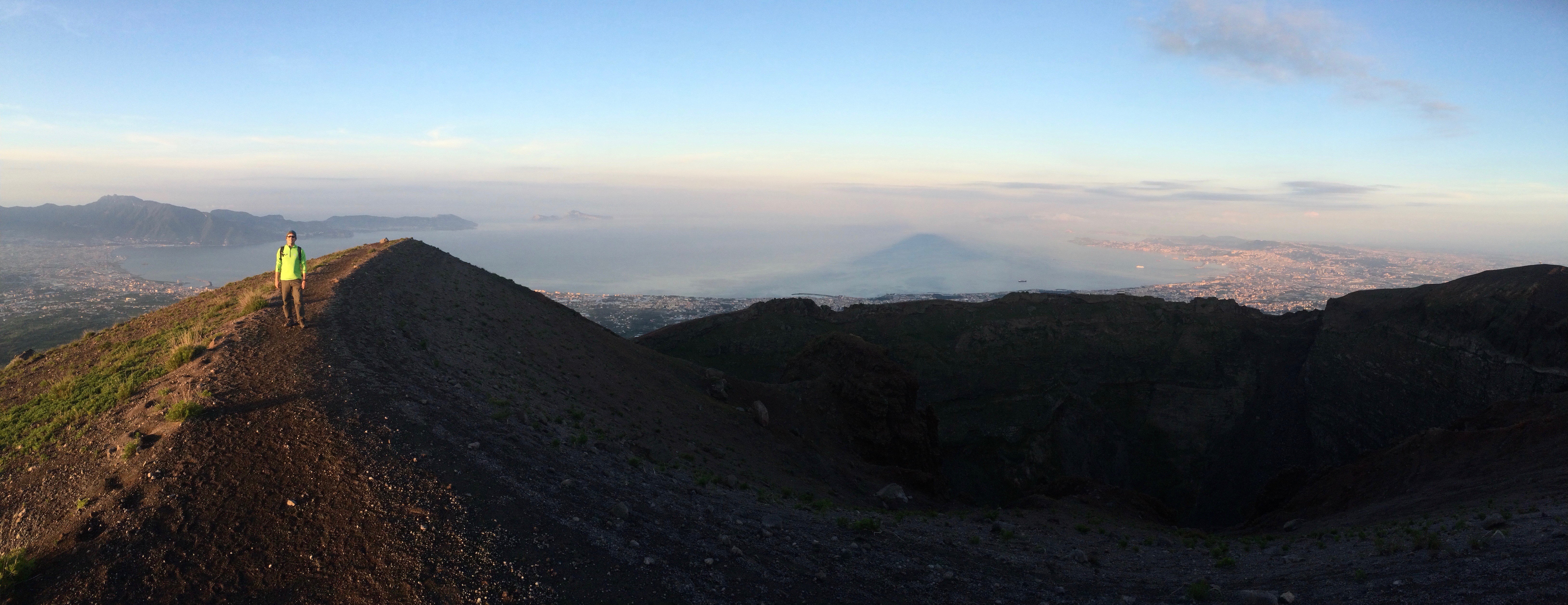
The summit, with Naples glowing in the distance!
To my surprise, the hike up, around the entire rim, and back down took only 1.5 hours, with plenty of stopping and picture-taking. Some parts were steep with loose scree, but the hike was generally short and easy. We returned to the parking area at around 7:30am, still too early for anyone else to have arrived. Now that Mount Vesuvius was crossed off our list, it was time to head into Pompeii!
We checked into Fortuna Village at Pompeii, an excellent campsite/motel literally across the street from the ruins. €20/day included motorhome parking for 2 people, motorhome servicing, electricity, and amazing, hot showers! Because it was right off the highway, we didn’t have to endure too much of the crazy traffic. Win.
Not long after checking in, we crossed the street to the Pompeii ruins, turned down all the private-tour offers, and paid €22 each for the Pompeii + Herculaneum combination tickets. We grabbed a free map and information booklet at the entrance, and continued our self-guided tour through the massive city of ruins. Sites of significance were labeled and the booklet explained plenty of information, and we took pleasure in exploring at our own pace. As usual, there were too many large groups, and it was unfortunately necessary to squeeze through some of the more remarkable sites. We spent half a day walking around this ancient city. Don’t forget to bring sunscreen, snacks, and water!
My favorites in particular were the main streets with the original indentations from all the wheeled carts. Remember, this was all from before 79 A.D!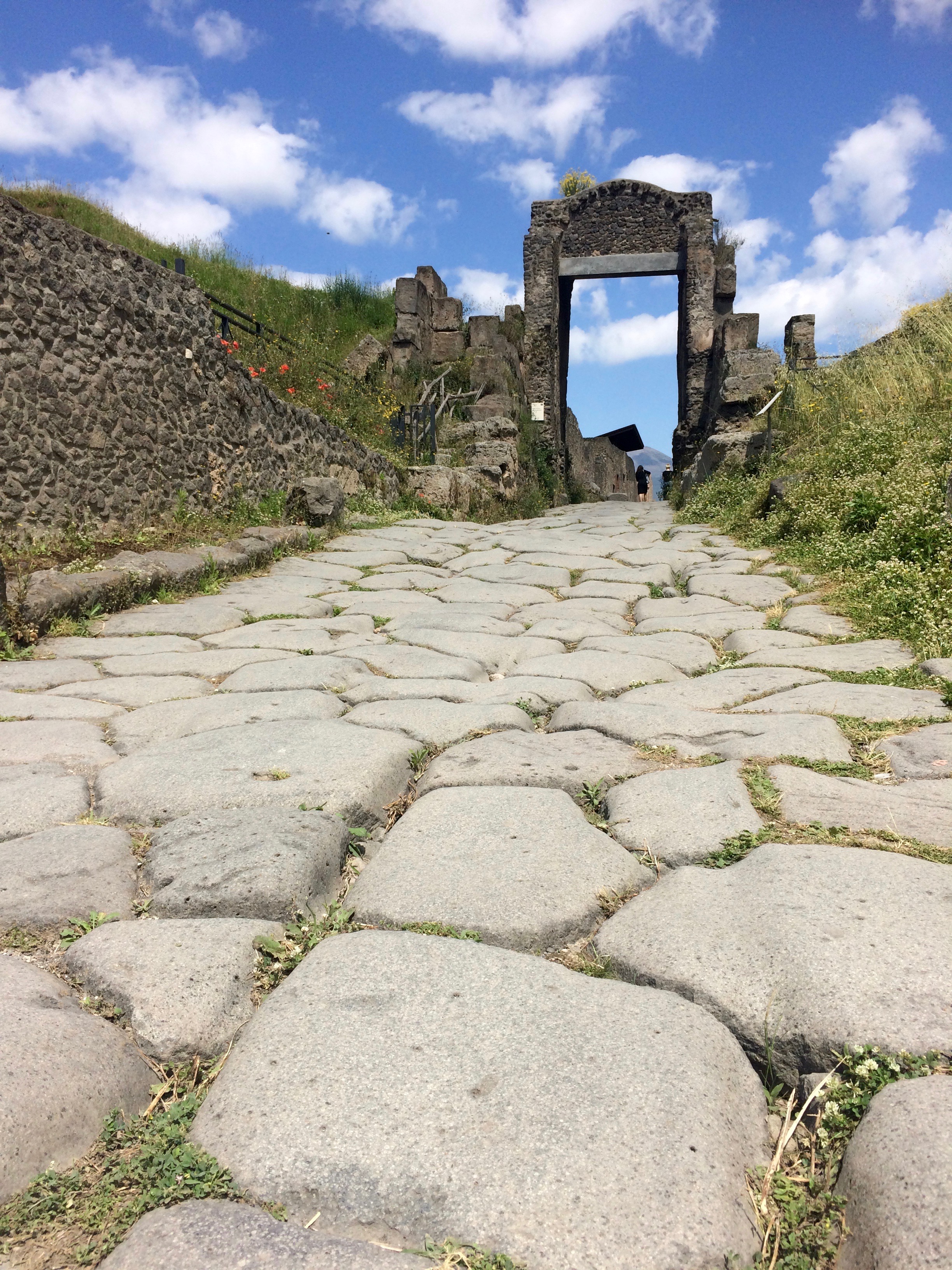
And the most iconic scene in the ancient city was Mount Vesuvius looming in the distance from the Temple of Jupiter.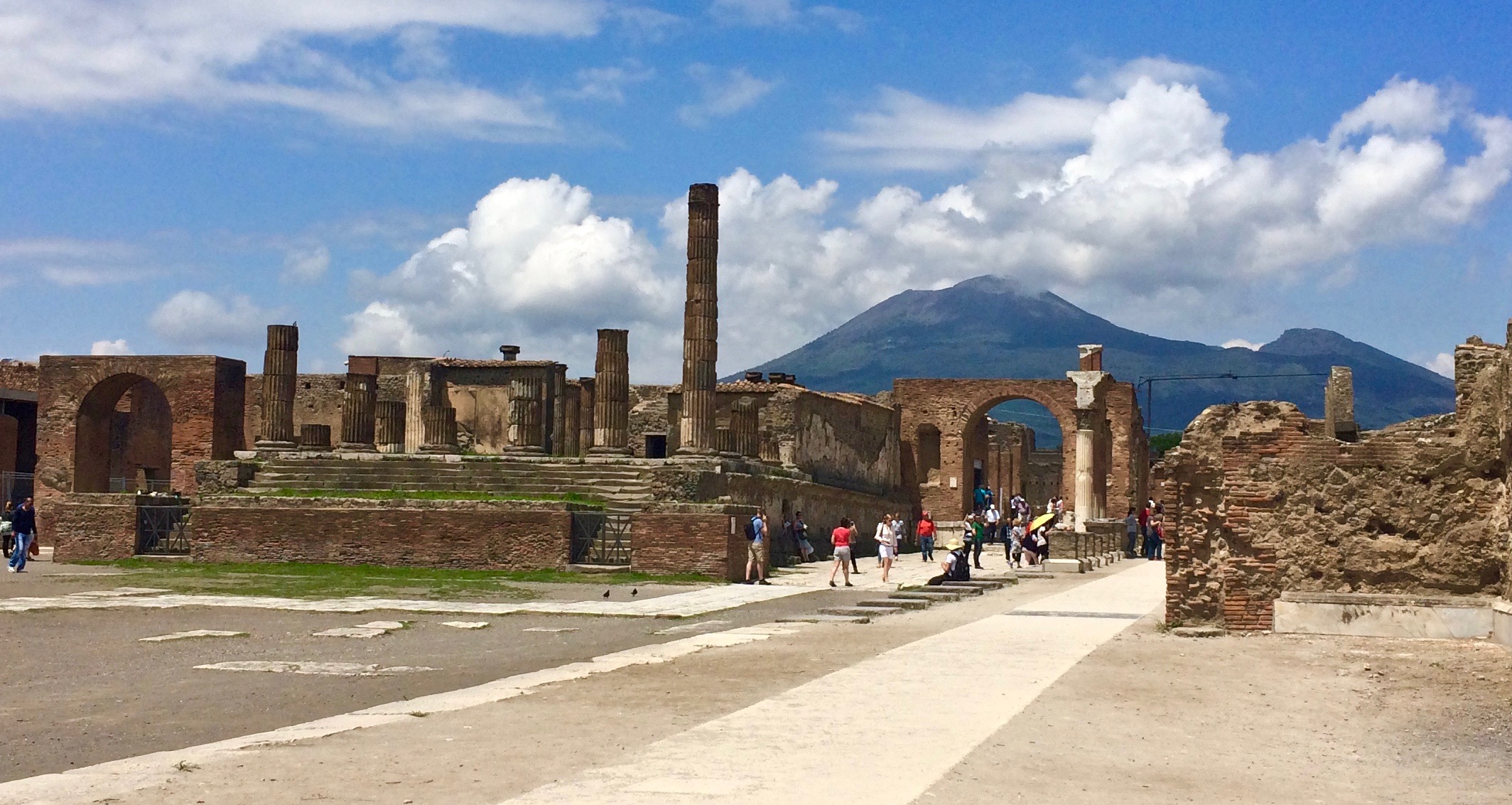
The following day we checked out Herculaneum, the smaller city ruins between Naples and Pompeii. We hopped onto the nearby Circumvesuviana train at the Pompei Scavi stop and rode the line up to Ercolono Scavi for €1.60 each. From the station it was only a 10 minute walk to the ruins. Easy peasy! Not only did exploring these ruins take 1/2 the amount of time as Pompeii’s ruins, there were far fewer people.
In addition to the wonderfully-preserved frescoes, paintings, columns, and mosaics, my favorite site at Herculaneum was the scene of modern-day Herculaneum literally sitting above ancient Herculaneum, with Mount Vesuvius rising in the background. Imagine living in these homes, knowing that there might possibly be un-excavated ruins buried beneath your home!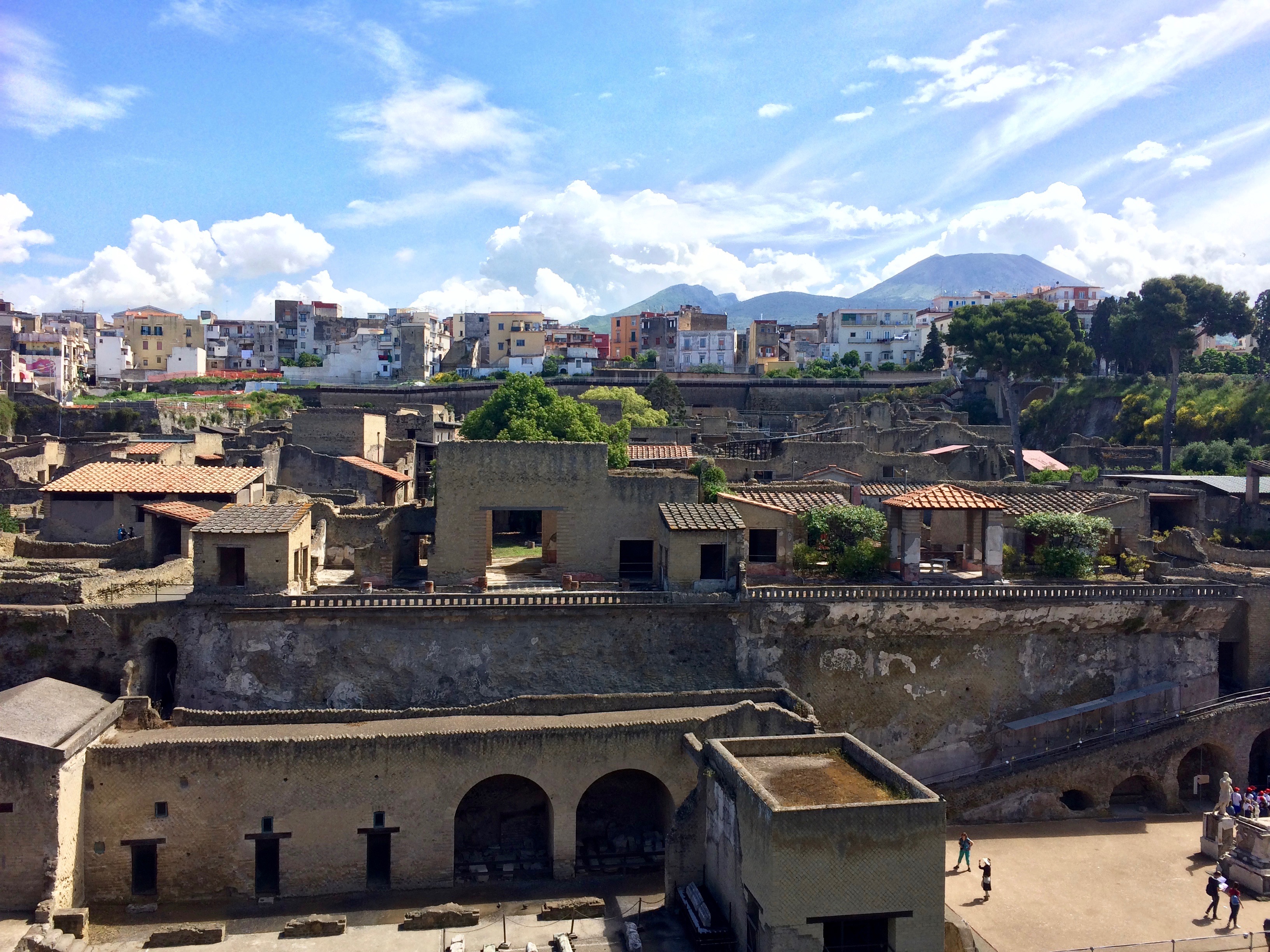
After touring Herculaneum, we continued on into Naples via train for €2 each. (It was €2.60 to return to Pompeii from Naples.) Strolling the streets of Naples reminded me a bit of Southeast Asia–dirty, loud, horrible traffic, scooters, and orgasmic food at incredible prices. We decided early on we would feast on Naple’s famous Margherita pizzas for lunch and dinner. Had we stayed in Naples longer, I probably would have had pizza for lunch and dinner again the following day. Who can say no to the irresistible wood oven-baked crust, fresh buffalo mozzarella, volcanic tomatoes, and fresh basil? Simple is best.
Take-away pizzas for €1.50 at Di Matteo: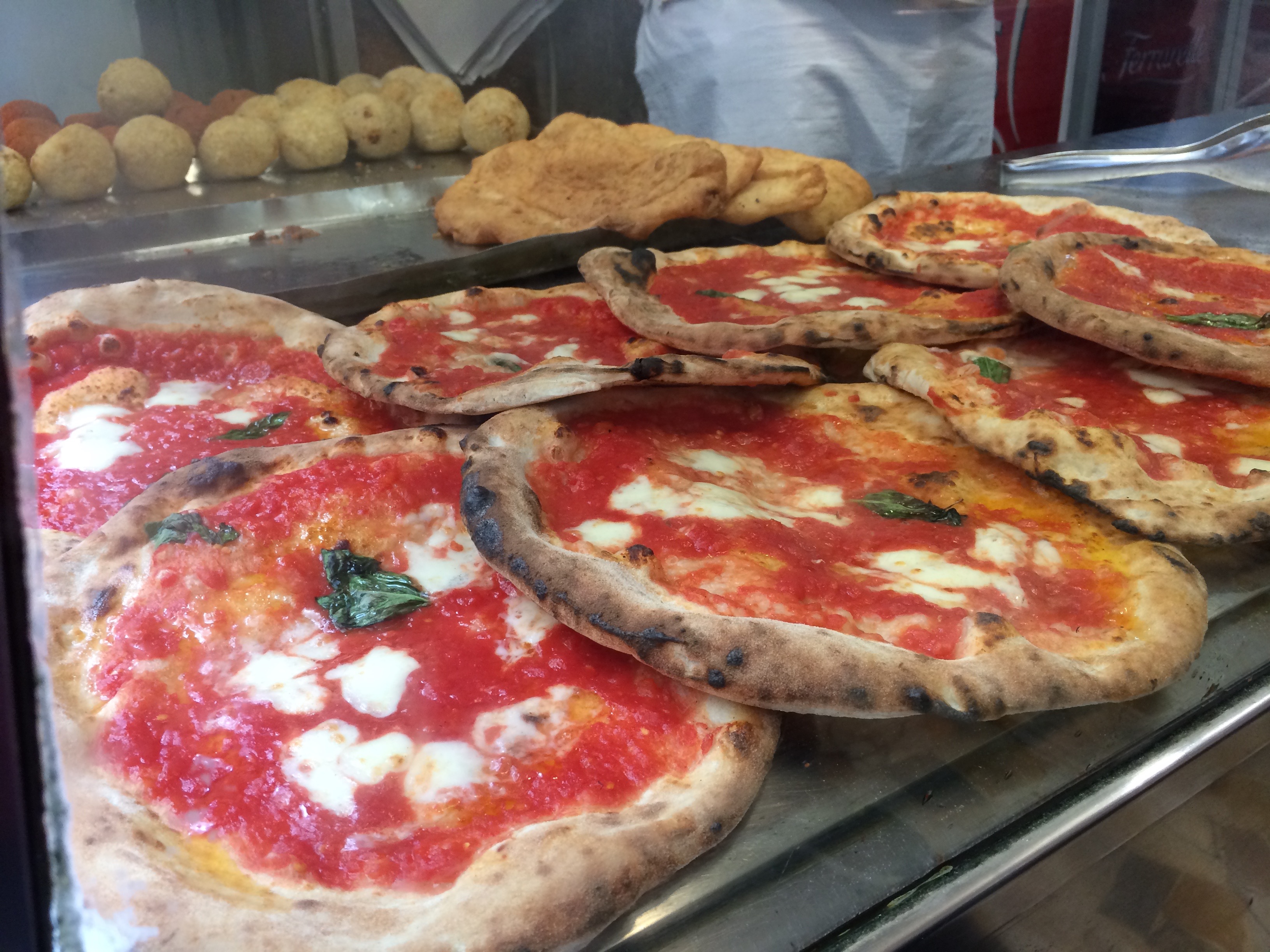
And massive pizzas at Pizzeria Gino Sorbillo: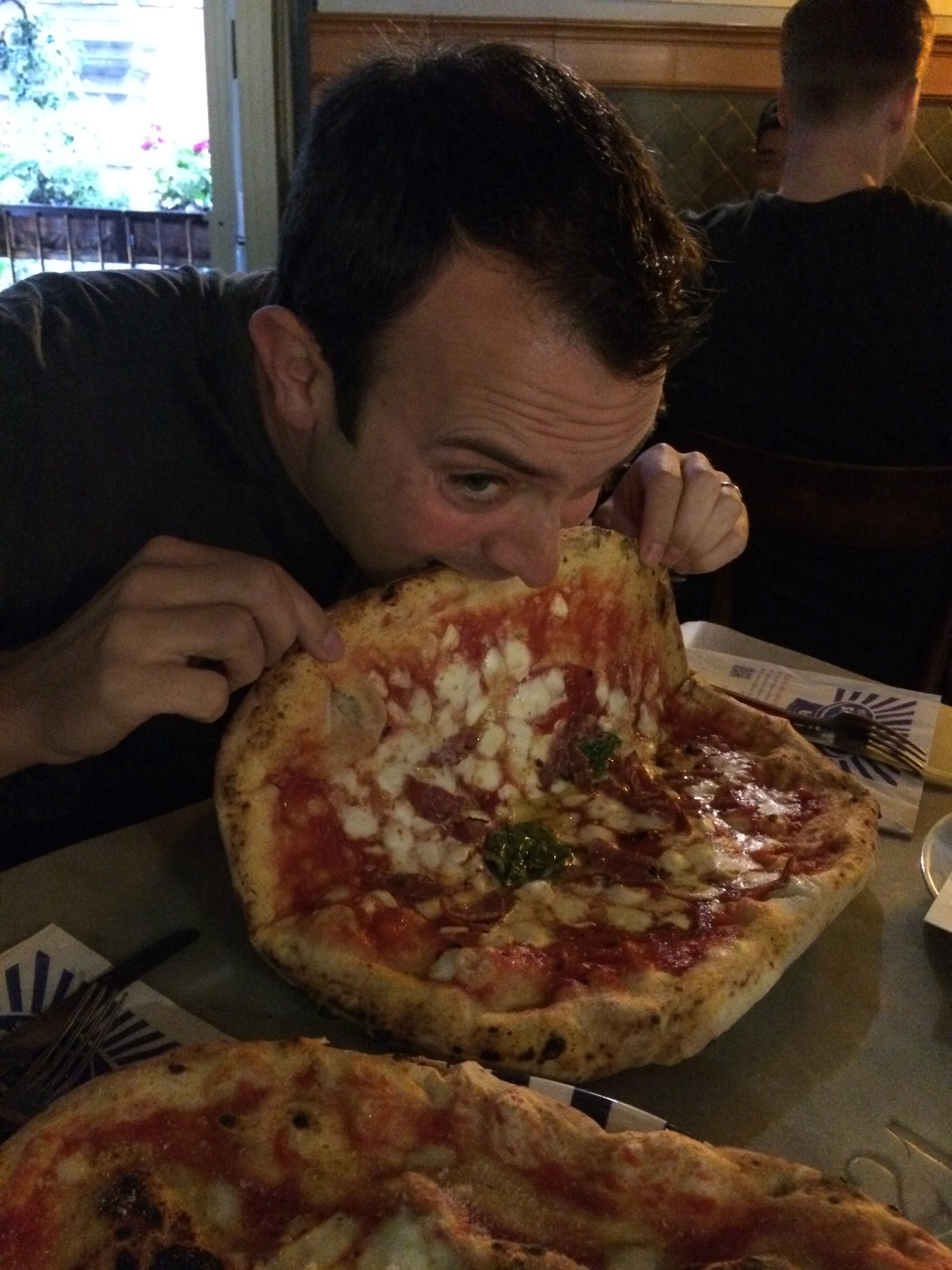
Perhaps our favorite Naples specialty was this indescribable desert called sfogliatelle. Chris even claimed it was one of the best things he’d ever eaten, because pizza can be found all over the world and sfogliatelle only in Naples. I don’t know if I’d go that far, but it was SO FREAKING AMAZING that I wanted to scream after each bite. Never had we experienced such delicate textures and unique dessert flavors for only €1.30 or €1.70 a piece. Both times we had them, they were warm and fresh. Think soft, doughy center, with flaky, crispy shell. And in the middle, a ricotta cheese custard filling with sweet orange essence. I hated myself for being so full. I wanted to eat more. These little guys were scrumptious at these bakeries: Pastisseria Capriccio di Salvatore Capparelli and Sfogliatella Mary.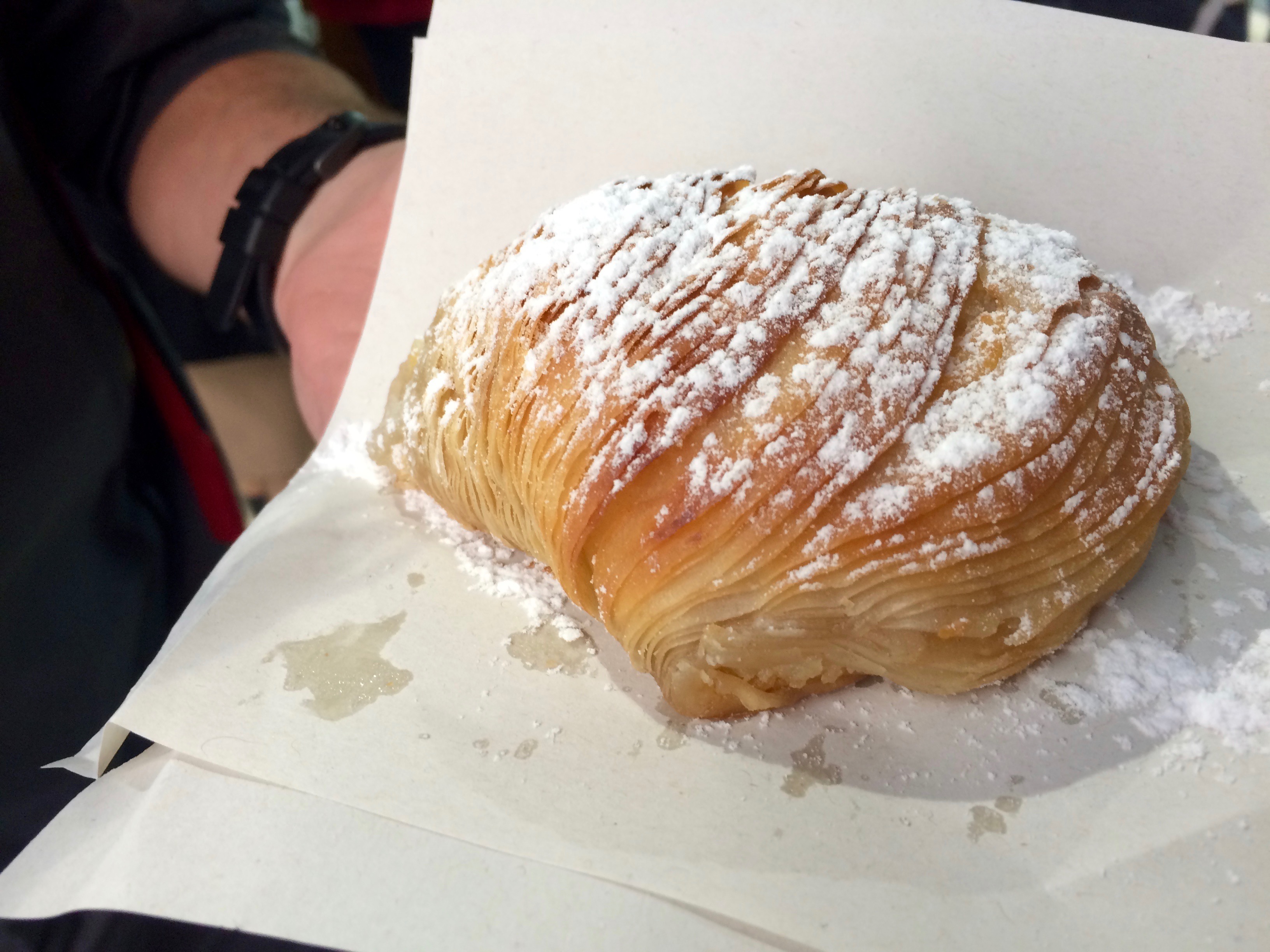
Food aside, interesting sites included the Basilica of San Francesco di Paola:
And strolling along the waterfront for views of Mount Vesuvius: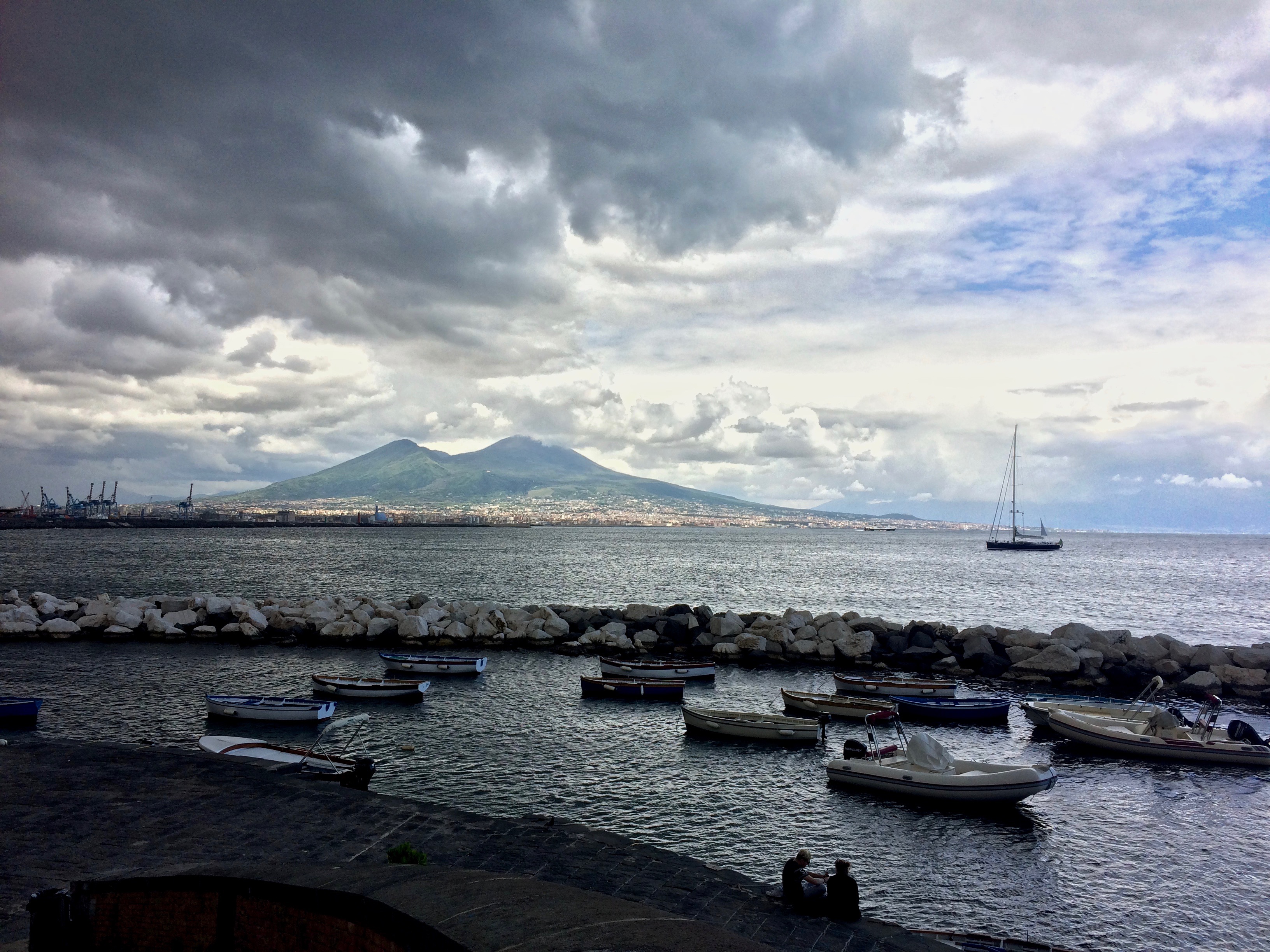
Needless to say, we returned to Pompeii at the end of it all exhausted from all the walking, and with our bellies uncomfortably full. Sure, we stuck to the typical tourist route of Mount Vesuvius, the ruins of Pompeii and Herculaneum, and the city of Naples, but at least we tweaked it a bit to hike Mount Vesuvius at sunrise! I still can’t decide which was more memorable–the sunrise hike or sfiogatelle. Mountain sunrise hikes I can always do, but sinking my teeth into a warm sfiogatelle? Until I return to Naples, I’ll be dreaming of these pastries…

